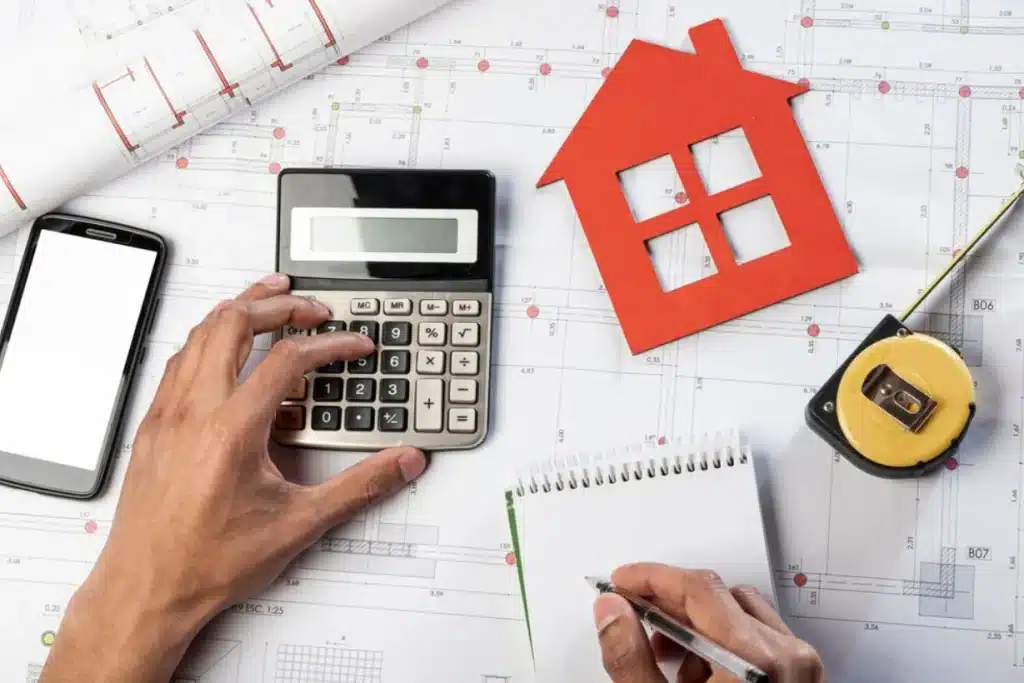More than just a way to defer taxes, a 1031 Exchange can be a valuable strategy for expanding your real estate portfolio. However, navigating the rules requires careful planning. Here’s what to know to make the most of its potential.

1031 Exchange: A Smart Strategy to Defer Taxes on Real Estate Sales
Capital gains taxes can significantly reduce your profits when selling appreciated real estate. It’s a common challenge for investors planning to scale their portfolios.
If you’re selling a rental property or land that has increased in value, a tax obligation may follow, often larger than expected.
Fortunately, a 1031 Exchange offers a way to defer those taxes by reinvesting the proceeds into a like-kind property. For investors aiming to build long-term real estate wealth, this IRS provision can be a valuable strategic tool.

What Exactly Is a 1031 Exchange?
A 1031 Exchange isn’t just a clever tax strategy—it’s a legitimate provision outlined in the U.S. tax code.
Specifically, Section 1031 of the Internal Revenue Code allows you to defer capital gains taxes when you sell an investment property, provided you reinvest the proceeds into another qualifying “like-kind” property.
In plain terms, this means you can exchange one investment property for another without immediately owing taxes on the gain. It’s a way to keep your capital invested and growing, rather than losing a portion to taxes right away.

Why Would You Want to Use a 1031 Exchange?
So, why go through the extra steps?
Because the long-term advantages can be substantial.
Tax Deferral: Keep More Capital Working
A 1031 Exchange allows you to defer capital gains taxes.
Rather than paying taxes immediately—potentially 20–30% of your profit—you can reinvest the full amount into another qualifying property. This keeps more capital in play to fuel future investments.
Portfolio Growth: Flexibility to Upgrade or Diversify
Whether you’re moving from a single-family rental to a multi-unit complex or shifting from commercial space to agricultural land, a 1031 Exchange offers flexibility. It enables you to grow, reposition, or diversify your real estate portfolio without triggering immediate tax consequences.
Wealth Preservation: Support Long-Term Investment Goals
Beyond tax deferral, this strategy can help support broader wealth-building goals. By preserving more of your gains, you give your investments greater potential to compound and support long-term financial planning.

How Does a 1031 Exchange Work?
Let’s break down how to complete a 1031 Exchange successfully.
While the concept is straightforward, it must follow a defined process to remain compliant with IRS regulations.
Step 1: Sell Your Property (Without Handling the Proceeds)
Begin by selling your current investment property.
However, you cannot receive the sale proceeds directly. The funds must be transferred to a Qualified Intermediary (QI), who will securely hold the money until it’s reinvested into a new property.
Step 2: Identify Replacement Property
Once your sale closes, you have 45 days to identify up to three potential replacement properties.
This flexibility is built into the IRS rules to account for the possibility of a deal falling through.
Step 3: Complete the Purchase
You must close on the replacement property within 180 days of selling the original one.
Missing this deadline disqualifies the exchange and may result in capital gains taxes becoming due.
Step 4: Reinvest and Continue
Once the replacement property is purchased, the tax on your original gain is deferred.
This process can be repeated with future transactions, as long as each exchange adheres to the IRS timeline and rules.

The Rules of a 1031 Exchange: What You Need to Know
Before starting a 1031 Exchange, it’s essential to understand the rules.
The IRS regulates this strategy and requires that it meet specific criteria to qualify for tax deferral.
Rule 1: The Property Must Be Like-Kind
“Like-kind” refers to the nature or character of the property, not its type or quality.
For instance, you can exchange a rental home for an apartment complex or trade farmland for a commercial property.
However, personal residences or properties held primarily for resale do not qualify.
Rule 2: Proceeds Must Be Held by a Qualified Intermediary
You cannot receive or control the proceeds from the sale.
All funds must be held by a Qualified Intermediary (QI). If you take possession of the funds—even temporarily—the exchange becomes taxable.
Rule 3: You Must Meet Strict Timelines
- 45 Days to Identify: After the sale of your property, you have 45 calendar days to identify up to three potential replacement properties.
- 180 Days to Close: You then have 180 days from the sale date to complete the purchase of one or more identified properties.
These deadlines are firm. Missing them disqualifies the exchange.
Rule 4: Replacement Property Must Be of Equal or Greater Value
To defer the full capital gains tax, the new property must be of equal or greater value than the one sold. If the replacement is of lower value, the difference—referred to as “boot”—may be subject to taxation.

What Types of Properties Can You Exchange?
Not all real estate qualifies for a 1031 Exchange, but the IRS does allow a broad range of investment properties to be exchanged under this provision.
Residential Rental Properties
If you own a single-family rental home or a multi-unit apartment complex used for investment purposes, these can typically be exchanged for other qualifying real estate.
Commercial Properties
Office buildings, retail centers, industrial facilities, and warehouses generally qualify.
A 1031 Exchange can support a strategic shift or upgrade in your commercial real estate portfolio.
Vacant Land
Undeveloped land held for investment can also qualify.
You may exchange it for other land or improved real estate, as long as both properties meet the IRS’s like-kind criteria.

Common Mistakes to Avoid in a 1031 Exchange
Even experienced investors can make missteps when navigating a 1031 Exchange.
Here are some of the most frequent errors to watch out for:
Missing Deadlines
The IRS deadlines are firm.
Failing to identify replacement properties within 45 days or close the transaction within 180 days will disqualify the exchange.
It’s essential to track these timelines carefully and work with professionals who can help ensure everything stays on schedule.
Selecting an Ineligible Property
The like-kind requirement must be met.
While the definition is broad, the replacement property must still align with IRS criteria.
If there’s uncertainty, it’s wise to consult with a qualified tax professional or legal advisor before proceeding.
Taking Possession of the Proceeds
This is one of the most critical rules.
If you directly receive any portion of the sale proceeds—even temporarily—the exchange becomes taxable.
Using a Qualified Intermediary (QI) to handle all funds is required for the exchange to remain valid.

The Tax Implications of a 1031 Exchange
One of the key advantages of a 1031 Exchange is the ability to defer capital gains taxes.
However, it’s important to understand the full scope of what tax deferral involves.
Tax Deferral, Not Tax Elimination
A 1031 Exchange delays your tax obligation—it doesn’t eliminate it.
If you eventually sell the replacement property without initiating another exchange, you’ll owe taxes on both the original gain and any additional appreciation.
Depreciation Recapture
If the exchanged property has been depreciated over time, the IRS may require some or all of that depreciation to be recaptured as ordinary income when the property is sold outside of another exchange.
This can result in a higher tax liability than expected, depending on your prior deductions.
Estate Planning Considerations
In some cases, holding the replacement property until death may provide a step-up in basis for heirs.
This means the deferred capital gains could be eliminated, potentially allowing beneficiaries to sell the property without owing taxes on the accumulated gains.
Consulting with tax professionals is essential to explore how this might align with your long-term estate planning.

Real-Life Example: How a 1031 Exchange Can Work
Here’s a simplified example of how a 1031 Exchange might apply in a real-world scenario:
Suppose you purchased a rental property 10 years ago for $200,000.
Today, that property is worth $500,000.
If you sold it outright, you’d realize a $300,000 capital gain, potentially resulting in a tax bill ranging from $60,000 to $90,000, depending on your individual tax situation.
Instead, you decide to complete a 1031 Exchange.
You sell the property, and the full $500,000 in proceeds is transferred directly to a Qualified Intermediary.
You then identify a new investment: a multi-unit apartment building valued at $700,000.
Within 180 days, you close on the new property and reinvest the full $500,000.
This allows you to defer taxes on the $300,000 gain while transitioning to a higher-value asset.
When managed correctly, investors can continue using 1031 Exchanges to defer taxes across future transactions, provided they follow IRS rules and timelines.

Why Work with a Financial Advisor on Your 1031 Exchange?
Navigating a 1031 Exchange can be complex.
Strict timelines, IRS rules, and tax implications make it essential to plan each step carefully.
That’s where the value of professional support comes in.
A financial advisor with experience in real estate strategies can help you understand the risks, avoid common mistakes, and coordinate the exchange process to support your long-term goals. While 1031 Exchanges are powerful tools, their effectiveness often depends on informed execution and strategic planning.
Final Thoughts on 1031 Exchanges
A 1031 Exchange can be a valuable method for growing your real estate portfolio while deferring capital gains taxes.
With the right planning and understanding of IRS rules, this strategy allows investors to reinvest more of their equity, preserve long-term gains, and maintain investment momentum over time.

